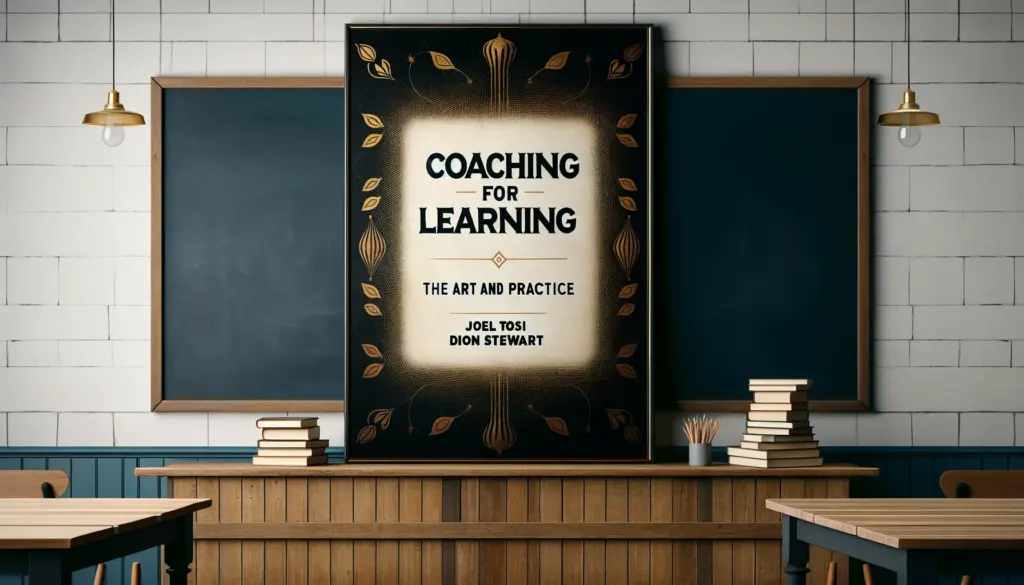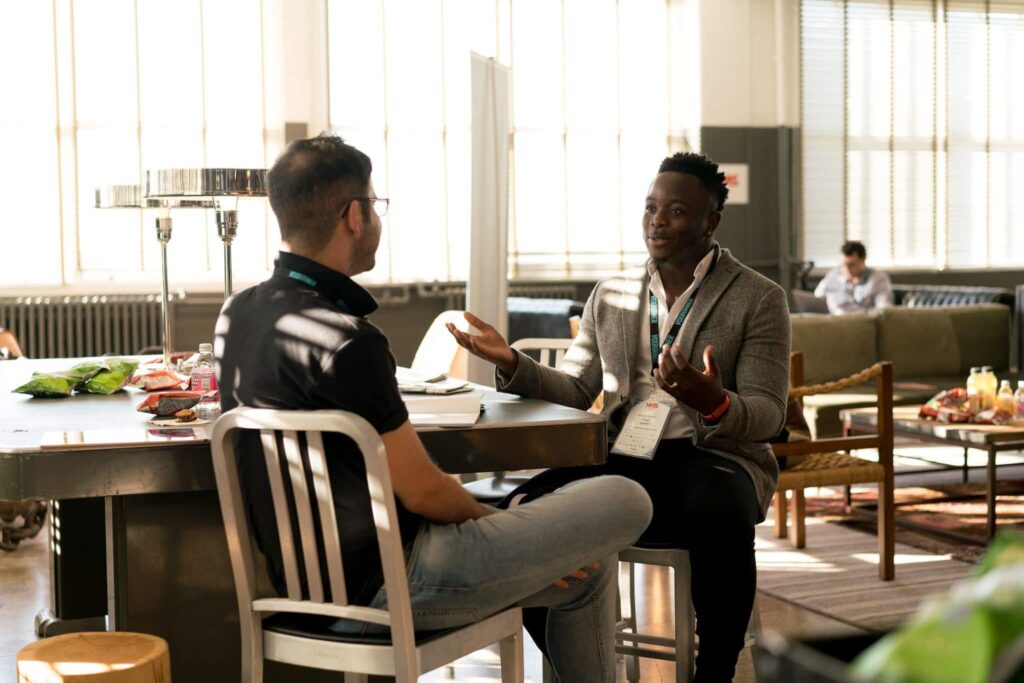Jessica Amortegui, former Senior Director of Learning & Development at Logitech, created the Leadership Leap program, which offers an innovative approach to leadership development. Drawing on Robert Kegan’s theory of adult development, the program invites leaders to explore the essence of their identity to achieve personal transformation.
The challenges of leadership
When creating a new kind of leadership program at Logitech, Jessica Amortegui started with insights around the complexity leaders face each and every day — and how she and her teammate, Ellie Harris, could support leaders in handling the mounting stress and intensifying demands.
“We wanted to help leaders deal with feeling overwhelmed, operating in a highly complex environment, managing diverse and demanding stakeholders, and trying to negotiate and balance their own perspective with competing and conflicting views…all the while keeping up with an insanely accelerated pace of getting stuff done.”
“We know that the more stakeholders you throw into the mix, the more pressure mounts. As a result, if you don’t have a strong vision for yourself and for what you want to create, you’ll be trying to deliver a million things to a million different people. That’s when you feel torn, overloaded, and just plain overwhelmed.”
“The program is about uncovering what leaders want to create, realizing that this may be different from what others want them to create. The former is driven by a strong purpose and the latter is driven by a need to protect ourselves and play it safe. What emerges from reconciling this inherent dilemma is a leader’s biggest obstacles, which — surprise — aren’t on the outside. The biggest obstacles leaders face are what they need to resolve on the inside — within themselves.”
Drawing on Kegan’s Theory of adult development
Amortegui is passionate about how to merge together the theoretical and empirical research that exists on leadership development on the one hand with what we know about adult development on the other. She believes that, when coupled, this builds deeper learning experiences.
“Imagine that our minds are like a cup. Over time we become really good at filling that cup with knowledge, skills, and competencies. But that only gets us so far. We all hit a point where more skills won’t get us to the next level of performance. We need something more than that. We need experiences that stretch the size of the cup. We need to actually transform our minds — that is, change the very form of our thinking. This is the very essence of a transformational learning experience. ”
So how do we get leaders’ minds to stretch and change?
“That takes a new perspective — a new way of seeing the world and making sense of it. In the process, we must challenge the very premise of developing leaders to adopt a ‘point-of-view’ and help them see a whole new ‘viewing point’, a place in which they can observe what’s in front of them with an expanded view of themselves and others.”
“When we have these kinds of perspective shifts, we often know something is changed in us, we just might not be able to clearly articulate it. We hear it described as the ‘old me’ versus the ‘new me.’ The old Jessica would have said that, but not anymore. But, who is that old Jessica? What happened to her? Where did she go? The answer to these questions shows the process of true change. If we are able to continually evolve to seemingly different versions of ourselves, we are able to do more than simply learn new leadership skills. We are truly developing and growing as humans.”
“As Marcel Proust said, ‘the real voyage of discovery consists not in seeking new landscapes, but in having new eyes.’ I think this boils down the essence of leadership development beautifully: How can we replace a leader’s current worldview with something better?”
The Leadership Circle Profile
One of the tools that Amortegui uses to facilitate this process is The Leadership Circle Profile. The assessment goes beyond a competency-based approach to help leaders get a deeper insight into the well-trodden assumptions affecting their leadership style.
“The Leadership Circle Profile is unique in that it is the only 360 I’ve seen on the market that not only provides a complete picture of your leadership competencies but also gives you an idea of the limiting beliefs that are affecting your ability to display those competencies. All leaders know the competencies that would make them more effective — being more purposeful and visionary, acting with greater decisiveness, setting a strategic vision, mentoring and developing their team, etc. But why don’t they display them? The Leadership Circle Profile unearths the ‘why.’”
The tool displays three key ‘reactive tendencies’, which limit our leadership effectiveness and root us in ways to protect our ego, rather than bring forth our deepest aspirations as leaders. Here is an excerpt describing these tendencies:
- Controlling leaders, from an early age, develop the strengths that use power to get results such as passion, drive, results-focus, decisiveness, etc. These strengths are often experienced by others as over-drive, perfectionism, workaholism, excessive ambition, dictatorialness, ineffective interaction style, poor listening, micromanaging, over-demanding, etc.
- The Protecting leader has developed strengths of intellectual brilliance and critical, and analytical capability. Overdone, others experience this leader’s strengths as superiority, arrogance, distance, aloofness, disconnectedness, ineffective interpersonal style, overly-critical, etc.
- The Complying leader has strengths of forming relationships with people, supporting and developing others, approachability, listening, and connecting. When these skills are over over-indexed, they are experienced as conventionality, cautiousness, submissiveness, self-centric, not holding the team accountable, being too focused on pleasing others, indecisiveness, failing to achieve results, etc.
While these tendencies, when displayed as strengths, operate as our leadership superpowers, in their reactive from they are our kryptonite. We hold on to them because they give us feelings of control, security, and approval. And yet, as secure and safe as they make us feel, they carry collateral damage to those we lead. In fact, the research shows all three reactive structures are negatively correlated with leadership effectiveness.
“In addition to limiting our leadership effectiveness, leading from this reactive structure of mind also places our self-worth outside of ourselves — we are looking for others to signal to us that we are ‘killing it,’ or that we are well-liked and respected. The problem with this is that our own vision and purpose gets clouded by what we believe we need to do to stay liked and well-regarded by others. To know how far we strayed requires asking: ‘Am I doing this for me, or I am doing this to remain in the good graces and esteem of others? Is that what I want for myself and my team, or is that what others want from me?’ The bigger the stakeholders and the further the fall from the top, the more intense it becomes to disentangle what we want from what others expect from us.”
Putting it into action
To take these new insights and apply them in a practical context, Amortegui and her teammate Ellie Harris developed a two-day workshop as part of the Leadership Leap program. The sessions take place in small groups of usually no more than 15 participants, to allow for deep self-reflection that facilitates “double-loop learning.” The structured exercises are an invitation for participants to begin to upgrade their operating systems and see themselves, others, and their worldviews differently.
The result is an understanding of what each leader needs to resolve in themselves in order to move forward as a more effective leader and — of equal importance — as a more fulfilled human being.
Affecting real change
The difficulty in truly implementing these insights is that we experience what Robert Kegan and Lisa Lahey call ‘an immunity to change‘. We have a built-in system to keep us from changing; it is a brilliant and effective system that is doing exactly what it is intended to do: keep us safe and protected.
“Much of what we’re doing and how we’re reacting to life is a way to limit our anxieties and fears. But when we keep our anxieties and fears at bay we also miss out on being able to make transformational changes in our lives. To engage in a process of deeper change requires a daily decision to choose courage over comfort and to realize that progress often entails pain.”
“To embark on this journey, we have participants design an experiment that represents a ‘small, modest, and recoverable’ baby step to begin the hard work of moving toward deeper change. This experiment helps test a new way of being in this world in an iterative way. It’s ‘me-search:’ I’m doing my own research on my deep-rooted assumptions and the way I’m showing up in the world. More than anything, it’s a process whereby I can continually test and iterate, dabbling in more and more levels of uncertainty and vulnerability to see what shows up for me.”
“I often hear people convicted for the need to have ‘practical takeaways’ from a learning experience. When it comes to transformational learning experiences, I don’t believe in that allure. If it’s easy to do, it’s not a deep change. I may be learning something new, but I am not growing and evolving. I want to invite leaders into a process of deeper change — one where they see their life and leadership as a series of experiments that allow them to step into the biggest versions of themselves.”
The ideal audience
The two-day workshop is for seasoned managers with five or more years of experience, all the way up to Vice Presidents and Senior Vice Presidents.
“But really the program is for anyone who feels like they’re handling a lot of complexity and working at the upper bounds of their capacity — which seems to be most of us. Given that, it may be easier to say who the program is not for. It’s not for that person who’s looking to enter a classroom and be given a simple ‘three steps’ of what they can do to be a better leader. This is for leaders who are open to believing that the biggest obstacle in their way right now is them — leaders who are willing to put their egos aside and tap into deeper aspirations to guide their leadership.”
Even with a room full of those participants, some will still end up saying, ‘I don’t know how to change, and I need you to tell me what to do next. I don’t believe that. I think we all know how to change. I think at the time we say this, we just aren’t willing to do what it takes to make the changes we desire. The program is designed for someone who’s willing to see that more effective leadership starts with a deep commitment to ourselves to want to be different. When we are willing to face this, the wisdom, resources, capabilities, and capacities we need to make it happen will — and do — emerge.”
“It’s not easy and the process is messy — that’s unavoidable. We know it feels disorienting, and that many become confused and question who they really are and want they truly want for themselves. But when we face that discomfort, I believe with every fiber of my being that what awaits on the other side is worth the effort: a whole new level of living and leading.”
Evolving the content and measuring success
Amortegui admits that it took many iterations to arrive at this format and that the team is still iterating to continually improve the program. As they run the program, they learn more about which experiences give people the most powerful insights and they continue to tweak those experiences so they land more powerfully. The program also evolves as Amortegui herself evolves and she gets more grounded in her understanding of the concepts.
“I think the measure of success is…first, a more easeful, conscious, and choiceful way of leading and living. If I can see more choice in life, I will become more resilient and equipped to handle the s*&%! storm that comes my way. The second success measure is leadership effectiveness and business results. The leader’s impact and how their business is performing is proof. While I know it’s hard to isolate this effect, I do believe it’s an important measure to take into account.”
“And the third measure can be captured from the 360 tool: it’s the amount of collateral damage that a leader causes. I think the higher you move up in an organization, the more collateral damage your behavior creates. It rolls down the hill, so to speak, and it snowballs. Being able to reassess a 360 and show progress is not only upgrading the leader’s operating system, it’s upgrading the DNA of the entire organizational culture.”







